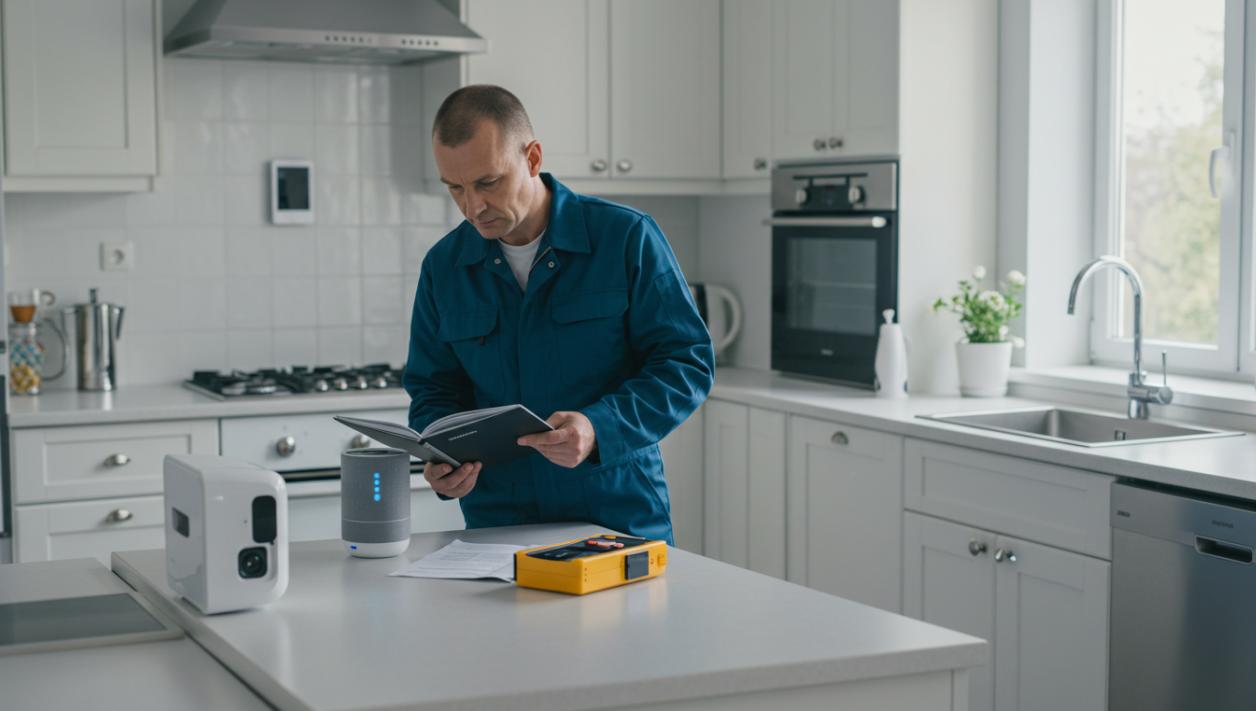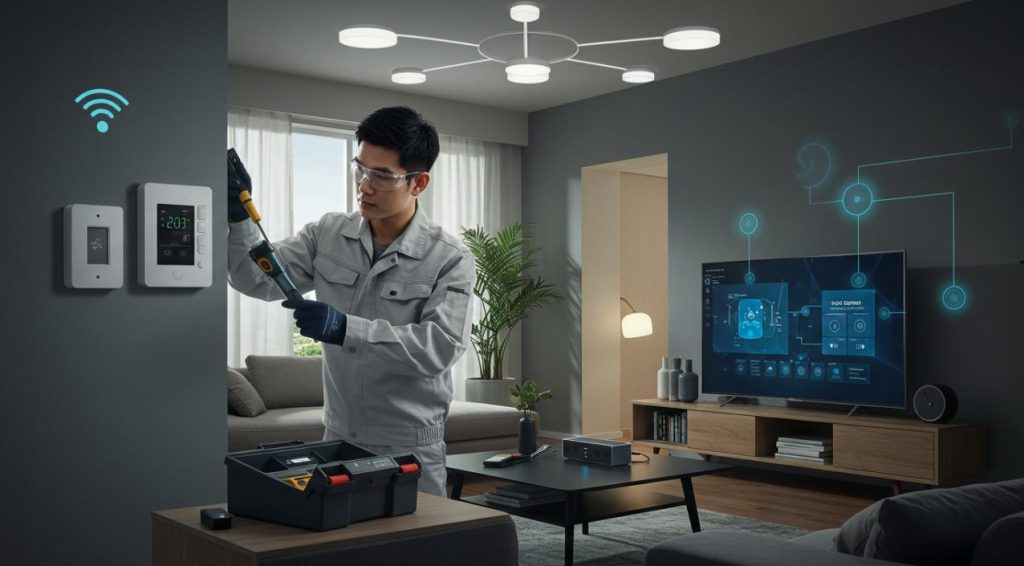Preventive Electrical Maintenance: For Always Efficient Smart Home Systems

Electrical faults cause nearly 47,700 home fires annually in the U.S., leading to major property damage and injuries. As smart homes increasingly depend on consistent power, preventive electrical maintenance is crucial. Regular inspections and routine upkeep help prevent disruptions, enhance home safety, and significantly boost energy efficiency. Learn how timely maintenance can result in considerable cost savings and a smarter, safer home.
Why Regular Checks Keep Your Smart Home Running Smoothly?
Maintaining the electrical systems in a smart home is vital, not just a good idea. Regular checks stop small problems from becoming big ones, ensuring consistent power and saving energy. Here’s why this preventive care matters.
Enhance Your System’s Safety
A well-maintained electrical setup reduces risks like overheating and electrical fires. Loose wiring connections, faulty grounding, or damaged components may cause incidents that pose serious safety hazards. Conducting regular inspections helps you detect and rectify these vulnerabilities early, maintaining peace of mind for your family.
Improve Energy Efficiency
Efficient electrical systems equal lower energy bills. Dirty components or loose connections force systems to work harder, consuming extra power. Maintaining electrical infrastructure optimizes energy consumption, ultimately contributing to sustainable living and reduced utility costs.
Extend the Lifespan of Your Components
Just like your car needs servicing to remain dependable, your smart home’s electrical components need care to stay durable. Properly cleaned and serviced elements like circuit breakers, transformers, and sensors avoid premature failure or performance degradation. Regular upkeep helps preserve your technology investments, protecting your smart home’s value.

How to Set Up a Reliable Preventive Maintenance Plan?
If you aim to keep your smart home efficient, a structured preventive plan is key. Simply put, this strategy involves evaluating your system, setting appropriate schedules, and recording actions taken. Consider the following steps to get started easily and effectively.
Initial System Assessment
First, carefully review your smart home’s electrical needs. Identify critical devices and their recommended inspection frequency. Certain delicate or older equipment usually requires closer attention, whereas newer technologies may demand less intense monitoring. Understanding individual equipment needs helps prioritize effectively and use resources wisely.
Create and Follow Clear Schedules
Once you’ve assessed your home’s specific requirements, develop a practical maintenance schedule. By clearly laying out inspection dates, cleaning appointments, and routine tasks, you won’t overlook essential checkups. Consistency in schedule adherence ensures reliability and prevents small problems from becoming expensive breakdowns.
Documentation is Your Friend
Keeping detailed maintenance records isn’t simply good practice—it ensures regulatory compliance and future savings. Tracking tasks provides useful historic data, allowing easier identification of recurring problems, components nearing replacement, or anomalies requiring immediate attention. Documentation simplifies planning while supporting any insurance or warranty claims.
Typical Smart Electrical System Maintenance Timeline
For your convenience, here’s an easy-to-follow schedule covering common maintenance tasks:
| Maintenance Task | Frequency |
|---|---|
| Visual inspection of wiring and outlets | Every 6 months |
| Testing smart sensors and smoke detectors | Once a month |
| Checking and tightening electrical connections | Annually |
| Cleaning control panels and circuit breakers | Every 6 months |
| Professional electrical system audit | Every 12 to 18 months |
Troubleshooting Common Issues Before They Escalate
Routine electrical preventive maintenance is also proactive problem-solving. Regularly inspecting essential points helps detect early-stage faults like unusual readings on sensors, overheating wires, strange vibrations, or irregular voltage. Timely identification empowers homeowners to promptly repair or replace components before complications escalate.
Keep an Eye on Smart Sensors
Sensors are the backbone of a smart home, feeding essential data to connected devices. Regular calibration and testing ensure their accuracy stays uncompromised. Incorrect data due to faulty sensors can affect system responsiveness and efficiency, highlighting the importance of regular checks.
Monitor Automated Garage Doors and Windows Regularly
Garage doors and connected roof windows, integral parts of your smart home, often show signals when needing maintenance. Check out this guide on signals indicating your automated garage door needs repairs. Similarly, regular maintenance of connected roof windows enhances overall home security and functioning.
Keeping your smart home working well means taking care of it early. Regular checks, planning ahead for maintenance, and fixing small problems fast save you money, make your systems last longer, and keep everything safer and running smoothly. Ignoring maintenance just leads to more risks, higher costs, and frustration.
For a smooth and efficient smart home, work with Rushforth Electric and Heating Limited, an electrical company expert who focuses on prevention. Start enjoying lasting efficiency, reliability, and safety, schedule your smart home’s electrical checkup today. Your smart home deserves expert care!
